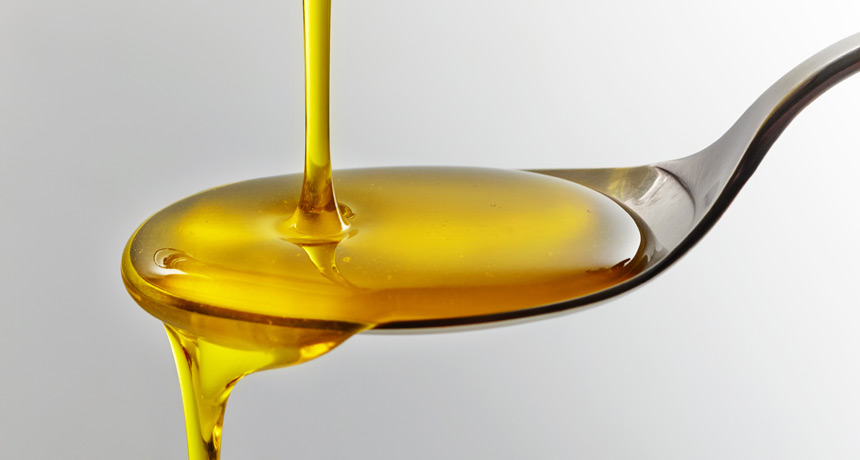(for more about Power Words, click here)
bond (in chemistry) A semi-permanent attachment between atoms — or groups of atoms — in a molecule. It’s formed by an attractive force between the participating atoms. Once bonded, the atoms will work as a unit. To separate the component atoms, energy must be supplied to the molecule as heat or some other type of radiation.
carbon The chemical element having the atomic number 6. It is the physical basis of all life on Earth. Carbon exists freely as graphite and diamond. It is an important part of coal, limestone and petroleum, and is capable of self-bonding, chemically, to form an enormous number of chemically, biologically and commercially important molecules.
double bond A type of bond between two atoms within a molecule. In a single bond, atoms share two electrons. In a double bond, they share four. This bond is slightly less stable than a single bond.
fat A natural oily or greasy substance occurring in animal bodies, especially when deposited as a layer under the skin or around certain organs. Fat’s primary role is as an energy reserve. Fat is also a vital nutrient, though it can be harmful to one’s health if consumed in excess amounts.
fatty acid A large molecule made of up chains of carbon and hydrogen atoms linked together. Fatty acids are chemical building blocks of fats in foods and the body.
hydrogen The lightest element in the universe. As a gas, it is colorless, odorless and highly flammable. It’s an integral part of many fuels, fats and chemicals that make up living tissues.
liquid A material that flows freely but keeps a constant volume, like water or oil.
saturated fat A fat molecule made from chains of carbon atoms, where each carbon has at least two hydrogen atoms attached to it (those on the ends have three). These chains have no double bonds. Saturated fats are found in animal fats (such as butter and lard), as well as in vegetable fats (such as coconut oil). Their long, straight chains allow them to become solid at room temperature.
trans (in chemistry) This refers to the position of atoms on a molecule, around a double bond. When two molecules are on opposite sides of the bond, they are in the trans conformation. When they are on the same side, they are in the cis conformation.
trans fat Short for trans-unsaturated fatty acids. Trans fats most often are made when scientists bubble hydrogen through an unsaturated vegetable fat. As the hydrogen atoms rearrange, some come down on opposite sides of a double bond, in the trans position. This creates a straight fatty acid, which is a solid at room temperature and can substitute for animal fats in processed food. Recently, such trans fats have been associated with increased risk of heart disease and are being removed from processed foods. Another type of trans fats occur naturally. They are chemically different. And in contrast to the industrially manufactured types, these trans fats have a number of health benefits.
unsaturated fat A fat molecule made of chains where some carbon atoms are not fully saturated with hydrogen atoms. These carbons form double bonds with the carbons next to them. Unsaturated fats are found in vegetable fats such as canola, olive and corn oil. Their double bonds create kinks in the molecules, which results in the fats often being liquid at room temperature.

